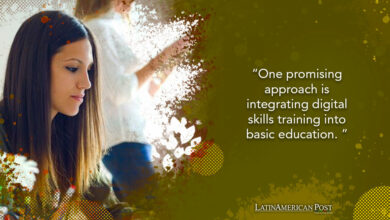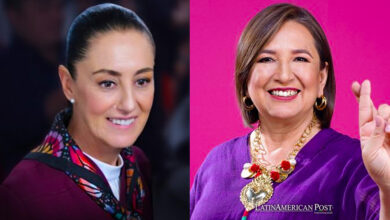This is How Our Children See Us in Their Minds
The characters of fantastic stories and also those of "flesh and blood" have become references for young and old. Their stories are a reflection of what they live and feel from everyday life.

The Woman Post | Ivonne Ortiz Ruiz
Escucha este artículo
Fantasy has perhaps been one of the ways in which human beings see those dreams portrayed, which in real life, would seem impossible to fulfill. Dark forces, villains, characters of light, other unlikely, and those who fight for justice are personalized in a fictitious way by the power they achieve, saviors by finding solutions up their sleeve, or daredevils who are defeated by good. In either case, the comic has become a representation of stories that captivate, envelops, and maintains the focus of attention.
This is how Iván René León Garzón, publicist and master's degree in creative writing, suggests that the birth of the comic is precisely in the “full evolution of communication; television was just beginning and this graphic form of expression was the benchmark for boys and girls, who found in it a way to recognize their world, being considered the great consumers in the middle of the last century”.
For this reason, when referring to the comic and exploring its involvement in the minds of the little ones, it cannot be ignored what has to do with its conception and design, a different codification that incorporates movement transformation. A 2D system played on paper or screen. The comic attracts by the colors, its narratives, and the sequence it handles, being more understandable what might seem complex at first glance.
That is why for its creators the intention that they have in front of that sketch is clear, Iván René León thus manifests it “any expression from literature to cinema what tries is to address the possibility in which the boy or girl manages to recognize forms to correlate them with the imaginary; forms with which they identify. It is moving away from a traditional world to join a new universe” and in that direction the minors adapt, they jump from reality to fiction just by blinking.
However, it is essential to understand how minors connect from their emotional side with fantastic characters and reflect in them a hero whom they see with devotion, as explained by Dr. Carlos Mauricio Peñalosa Pedrosa Psychologist with 18 years of experience in the clinical part and studies of neurolinguistic programming, emotional biodecoding of diseases and coach, “anthropologically the human being has always wanted a representation of a superior being; man wishes to have something above him. Within the family dynamics, the representation of their parents has been understood as that emotional, psychological vision of the hero.”
Also read: #TechMums: Empowering Mothers Through Technology
That is why, as indicated by the specialist for children in their psycho-affective development, in addition to psycho-emotional at an age that ranges between 3 to 4 years, their parents become a fundamental figure for their existence, which implies that this interpretation Faced with invincible beings, come precisely, from an impeccable being that symbolizes strength, security, that transforms and changes.
However, there may be a danger in the little ones who strengthen their view of life before these personifications, as stated by Dr. Mauricio Peñalosa, “the greatest risk is that our sons and daughters, through modeling or imitation, consider that this superhero represents a reality in the face of the powers it has” and recalls that in the 60s and 70s when Superman was born, associated at the time with embodying geopolitical circumstances present in the United States that in the end demanded that the character save the earth from the evil ones who wanted to affect humanity, several infants wanted to imitate the act of flying, transfiguring a reality that in that parallel world offered them the possibility of having a capacity for dominance.
The above is the mirror of latent behaviors in children. Without going any further, and from that field of psychology, it is necessary for example that children, given these representations and culturally, do not cry, do not suffer, face oppression with courage. Girls, on the other hand, are sensitive, delicate, loving, they express their feelings. Even as the specialist emphasizes, there are cases in which the adult continues to maintain an emotional immaturity, since he waited for his protector to be rescued, preventing that adaptation to a reality that is mediated by new conditions.
For Iván René León, an expert in creative writing, “children are subjects that can be influenced from any point of view: music, video games, advertising, but the most important thing is that in this process, they have the support of an adult who serves as a guide to orient that imaginative capacity and connects it with what is reality. In other words, he can discern between good and evil”.
He adds that although the comic in its beginnings was assumed as a form of entertainment, now it presents a dynamic where the social takes a fundamental role and in that confrontation of the characters immersed in the stories, it also teaches from the game how to motivate that spirit of struggles with personal circumstances or life projects. He gets the best of himself because it shows that it is possible to identify with certain actions that contribute to his vision of the future; Without saying with this, that it influences the child's ability to analyze his surroundings, since the comic is only a "pinch of imagination" that contributes, but the contribution of other contexts is definitely required to modify behaviors in the subject.
Whatever the perception of the comic, what is true is that these heroes today are not only fantastic, unreal, romantic, as there are also those of "flesh and blood" as explained by Dr. Carlos Mauricio Peñalosa, “we will always have within our anthropology the possibility of having role models that can be represented in social actors: firefighters, military, doctors who allude to those people who save the world” and this makes an extrapolation, from the unreal to the real because human activities also redeem society.
In this sense, the specialist is emphatic in mentioning that "we will continually have heroes in our unconscious who will drive us to transform the universe." However, for him what is significant at the end of the road is the hero who is in the heart of each person, the being, his own self, a brave person who forges his character, security, and confidence to transform, when facing the challenges that he faces. they bring their experiences and shape that environment with conviction, an environment that is "perceived as optimistic and guiding for us."




